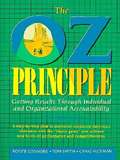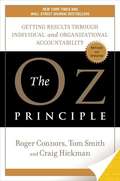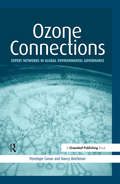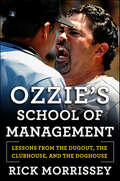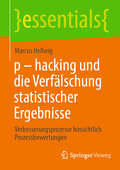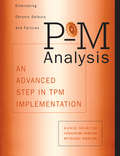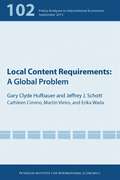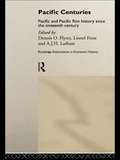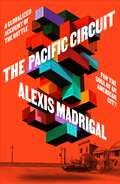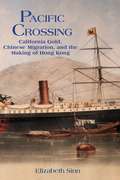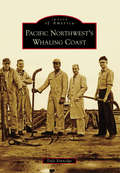- Table View
- List View
OYO: Creating Effective Spaces (Abridged)
by Das Narayandas Mahima Rao-Kachroo Rachna Tahilyani Sunil GuptaTwenty-four-year old Ritesh Agarwal, founder and CEO of India-based online, hotel branding network OYO Rooms, has tackled the issue of unreliability in India's highly-fragmented budget hotel industry. In 2018, OYO branded 8,500 properties across 200 cities and managed to capture almost 1.5% of India's budget hotel market. Ritesh believes that in the process, OYO has honed technological skills and infrastructural capabilities that can transform the company from being a technology player to a hotel developer. OYO now aspires to convert corporate spaces and homes into accommodation spaces, and to make its mark worldwide.
The Oz Principle
by Roger Connors Tom Smith Craig Hickman"I didn't have time. " "It's not in my job description. " Many people and organizations have recognized the need to move away from this type of "blame game" and toward greater personal accountability at work, but few have known how to foster or maintain it -- until The Oz Principle. Now in paperback, The Oz Principle explores how people in business suffer from the same feelings of anxiety and helplessness that beset the characters in The Wizard of Oz. Through a broad mix of examples and stories, this book examines how people use their victimization to justify inaction, excuse ineffectiveness, and rationalize poor performance. It shows how to break through "above the line" with an attitude of accountability that empowers employees to overcome problems, excuses, and biases, to achieve enviable results. Self-assessment charts and quizzes enable readers to chart their own path to personal empowerment and enhanced company performance. Working through this book is a true journey of discovery, to learn that, just as in The Wizard of Oz, the real Wizard lives within each of us.
The Oz Principle: Getting Results Through Individual and Organizational Accountability
by Craig Hickman Roger Connors Tom SmithThe definitive book on workplace accountability by the New York Times bestselling authors of How Did That Happen? Since it was originally published in 1994, The Oz Principle has sold nearly 600,000 copies and become the worldwide bible on accountability. Through its practical and invaluable advice, thousands of companies have learned just how vital personal and organizational accountability is for a company to achieve and maintain its best results. At the core of the authors' message is the idea that when people take personal ownership of their organization's goals and accept responsibility for their own performance, they become more invested and work at a higher level to ensure not only their own success, but everyone's. Now more than ever, The Oz Principle is vital to anyone charged with obtaining results. It is a must have, must read, and must apply classic business book.From the Trade Paperback edition.
The Oz Principle: Getting Results Through Personal and Organizational Accountability
by Tom E. C. Smith Roger Connors Craig HickmanUsing the wizard of oz and its characters as a metaphor, this book gives lots of examples and practical steps people and organizational leaders can take to improve organizational accountability. The authors contend that we need to reframe how we think of accountability -- it's not about playing the "blame game", it's about taking responsibility for what we do and figuring out how we can rise above the things that happen to us and to the places we work that we can't control and achieve the results we want to achieve. Although a bit simplistic and self-promotional, this book lays out some good principles that, if followed, would make our worklife and personal lives better, richer and more fulfilling
Ozark Feed and Ag Corporation: The ERP Decision
by Janice H. Hammond Paul Kalmbach Eric Bernstein"Sitting in his office on a cold night in December 2014, Christopher Page, CEO of Ozark Feed and Ag Corporation (Ozark), was trying to digest the results from the executive team meeting that had just taken place. He could hardly believe the numbers that were being discussed. It had been another record year for sales and profitability. The company’s 2014 revenue and income were each 10% higher than in 2013, despite competing in an industry that was growing at 1%–2% annually with thin margins. Now, the sales team was projecting even higher revenue growth for 2015—no small feat for Ozark, an animal feed manufacturing company with over 650 employees and $600 million in revenue."
Ozone Connections: Expert Networks in Global Environmental Governance
by Penelope Canan Nancy ReichmanIt is difficult to think of a more significant example of international cooperation to address a problem that threatened the health and wellbeing of the entire planet than the 1987 Montreal Protocol for the Elimination of Ozone-Depleting Substances. This breakthrough in international environmental governance has proved to be an extraordinary success beyond rhetoric or promises. In a dozen years, this international agreement went from an understanding of the need to act in a precautionary manner for mutual benefit to a successful worldwide effort to eliminate chemical substances harmful to our protective ozone layer. The production and consumption of most ozone-depleting substances has now been phased out in developed countries, with developing countries not far behind. What happened and why is of tremendous importance for those looking for guidance in the future, particularly those now involved in hugely complicated negotiations on climate change. The success of the Montreal Protocol has been linked to many factors such as political will, treaty flexibility and the recognition of equity issues raised by developing countries. While comprehensively analysing all of these success factors, Ozone Connections goes on to suggest that a social organization of global governance as typified by the protocol's Technical and Economic Assessment Panel (TEAP) was a unique – but replicable – decisive factor. The book argues that we need to understand how the implementation of complex global environmental agreements depends on the construction and exploitation of social connections among experts who act collectively to define solutions to environmental problems. This highly original and provoking thesis synthesises some of the more exciting social science concepts and methods, while refining our basic understanding of environmental social change and providing policy-makers with concrete success factors to replicate. This book will be essential reading for academics in the fields of sociology, political science, international relations, network studies, human communication, motivation, collaboration and leadership, as well as the burgeoning interdisciplinary field of environmental studies. Businesses will also find many applications for practical use. Finally, the many directly transferable lessons from ozone layer protection make this book a key addition to the growing literature on climate change.
Ozzie's School of Management: Lessons from the Dugout, the Clubhouse, and the Doghouse
by Rick MorrisseyGoing behind the scenes with Ozzie Guillen, one of baseball's most colorful and irrepressible managers, to reveal the hidden factors that create a winning teamWhen Ozzie Guillen opens his mouth, nobody knows what's going to come out. And that has made the former manager of the Miami Marlins endlessly entertaining to legions of baseball fans. In language that is often as profane as it is colorful, he will lash out not only at his team's opponents but also at his own players, reporters, fans, and most of all, himself. He is always getting himself in hot water, and he loves every minute of it.Yet for all the antics and controversy, Guillen was one of the game's best managers—a World Series champion and a perennial contender. This book opens the door on the secrets to his success.Ozzie's School of Management distills the ten commandments of managing, Guillen-style, which means no-holds-barred and leave your squeamishness at the door. The Chicago Sun-Times sports columnist Rick Morrissey, who built a strong rapport with Guillen during his eight years with the Chicago White Sox, takes us on a rollicking ride through Ozzie's world, shining a light on his sharp intellect, organizational insights, and changing moods, and showing that the most important part of managing occurs before the first pitch and after the last out.
P&G Canada: Old Company, New Tricks
by Tiffany Y. Chang Brian J. Hall Theresa Morin HallP&G Canada faces ongoing global pressure to increase productivity and reduce spending. Thom Lachman, President of P&G Canada, is seemingly out of options that will make a large enough impact without harming the business, until the idea of a radical space reduction strikes him. The case follows Lachman, working closely with Country HR Manager Jane Lewis, from idea inception to the eve of the company-wide transition to a dramatically scaled-down and reorganized office space. In particular, the case provides a basis for discussion surrounding employee motivation-specifically as it is affected by the change management process and workspaces, benefits versus perks, and sorting effects. A (B) case details the outcome of the office space transition.
P&G Canada: Old Company, New Tricks (B)
by Tiffany Y. Chang Brian J. Hall Theresa Morin HallThis is the (B) case to P&G Canada: Old Company, New Tricks. It details the outcome of the drastic reduction in office space from eight floors to three floors.
P&G Canada: Old Company, New Tricks
by Brian J. Hall Theresa Morin Hall Tiffany Y. ChangP&G Canada faces ongoing global pressure to increase productivity and reduce spending. Thom Lachman, President of P&G Canada, is seemingly out of options that will make a large enough impact without harming the business, until the idea of a radical space reduction strikes him. The case follows Lachman, working closely with Country HR Manager Jane Lewis, from idea inception to the eve of the company-wide transition to a dramatically scaled-down and reorganized office space. In particular, the case provides a basis for discussion surrounding employee motivation-specifically as it is affected by the change management process and workspaces, benefits versus perks, and sorting effects. A (B) case details the outcome of the office space transition.
P&G Japan: The SK-II Globalization Project
by Christopher A. BartlettTraces changes in P&G's international strategy and structure, culminating in Organization 2005, a reorganization that places strategic emphasis on product innovation rather than geographic expansion and shifts power from local subsidiary to global business management. In the context of these changes introduced by Durk Jager, P&G's new CEO, Paolo de Cesare is transferred to Japan, where he takes over the recently turned-around beauty care business. Within the familiar Max Factor portfolio he inherits is SK-II, a fast-growing, highly profitable skin care product developed in Japan. Priced at over $100 a bottle, this is not a typical P&G product, but its successful introduction in Taiwan and Hong Kong has de Cesare thinking the brand has global potential. As the case closes, he is questioning whether he should take a proposal to the beauty care global business unit to expand into Mainland China and/or Europe.
p - hacking und die Verfälschung statistischer Ergebnisse: Verbesserungsprozesse hinsichtlich Prozessbewertungen (essentials)
by Marcus HellwigDie Signifikanz einer statistischen Aussage wird mit p bezeichnet, als probabilistische Größe. Es gibt Kritik an der Aussagekraft des p-Wertes dahin, dass er in der Statistik mitunter dahingehend missbraucht wird, dass Effektgrößen bewusst verfälscht werden. Dieser Missbrauch äußert sich darin, dass an der an der Größe und Auswahl einer Datenmenge solange manipuliert wird, bis die erwünschten Parameter erreicht werden. Diese Tätigkeit wird mit - p – hacking bezeichnet. Dieses essential widmet sich der Aufklärung.
P-M Analysis: AN ADVANCED STEP IN TPM IMPLEMENTATION
by Shirose Kunio Mitsugu Kaneda Yoshifumi KimuraIn this large-format implementation manual, TPM experts explain P-M Analysis. (A methodology that makes zero losses a reality in your TPM program.) P-M Analysis is designed to help your TPM teams analyze and eliminate chronic problems that have been neglected or unresolved in the past.Chronic quality defects and other chronic losses are hard to era
P.S. You're a Genius: An Unconventional Guide To Finding Your Innate Gifts (Even When You Feel Like You Have None)
by Kelly TrachDo you feel like you&’re doing it all and it&’s still not enough? Discover your shortcut to success in P.S. You&’re A Genius. After a lifetime of overachieving, aiming to be excellent at everything, and three failed tech startups in Silicon Valley, Kelly Trach was stirred by a simple question: What if I just did what I&’m good at? Now a six-figure business coach, Kelly poses the same question to you: What if you just did what you&’re good at? Despite conventional wisdom, the gifts and experience you need are already innate. Having that &“it factor&” or &“special ingredient&” isn&’t as elusive as you may think. P.S. You&’re a Genius takes you on a self-reflective journey to find your own gifts (especially when you don&’t feel &“gifted&” at all), asking questions like: How are your idols a reflection of your own genius? What are you great at that nobody taught you how to do? How is your darkest shadow your greatest gift? What have you been unexpectedly criticized for? Through these questions and more, you&’ll uncover the ways you naturally excel, relinquish the lie that you&’re not &“good enough,&” and discover how to convincingly convey your value to anyone. In the process, you&’ll unlock the gumption to go after what you really want and ditch the mindset blocks holding you back—because YOU have an inherent genius. You just have to find it.
PA 102 - Local Content Requirement: A Global Problem
by Gary Clyde Hufbauer Jeffrey J. Schott Cathleen Cimino Martin Vieiro Erika WadaLocal Content Requirements: A Global Problem, Local Content Requirements, LCR, LCRs, Gary Clyde Hufbauer, Gary Hufbauer, Jeffrey J. Schott, Jeffrey Schott, Cathleen Cimino, Martin Vieiro, Erika Wada, Peterson Institute for International Economics, Institute for International Economics, PIIE, 978-0-88132-680-2, 978-0-88132-681-9, Local, content, requirements, protectionist, protection, protectionism, tariff, non-tariff barriers, NTBs, WTO, policy, recession, trade, economy, economic, commerce, jobs, imports, Brazil, Canada, China, India, Nigeria, United States, Argentina, Australia, Austria, Azerbaijan, Chile, Denmark, European Union, France, Germany, Ghana, Greece, Hong Kong, Indonesia, Japan, Korea, Malaysia, Mongolia, Mexico, Morocco, Paraguay, Russia, Saudi Arabia, Singapore, South Africa, Spain, Taiwan, Tanzania, Thailand, Turkey, Uganda, Ukraine, United Kingdom, United Arab Emirates, Vietnam
Pace: One Dimension of Adaptive Project Management
by Dov Dvir Aaron J. ShenharHow much time is available to complete a project? Increased pace requires careful time management, more autonomy for project teams, and more support from top management. This chapter looks at how the time available to complete a project affects how the project is managed.
Pacemaker Economics
by Jane S Lopus Mania OwenThis is a second edition economics textbook. Unit 1 -Introduction to Economics Unit 2 - The American Free Enterprise System Unit 3 - The American Economy at Work Unit 4 - The Role of the Consumer Unit 5 - Money and Banking Unit 6 - How Well is the Economy Doing Unit 7 - Government and the Economy Unit 8 - A Global View
Pacific Centuries: Pacific and Pacific Rim Economic History Since the 16th Century
by Dennis O. Flynn Lionel Frost A.J.H. LathamStarting with the 16th century trade of Latin American silver and Chinese silk, leading researchers trace the economic, environmental and social history of the Pacific region. Chapters examine the trade of diverse commodities within the Pacific and analyse the ecological and social impacts of this increasing economic activity. The strong Chinese ma
The Pacific Circuit: A Globalized Account of the Battle for the Soul of an American City
by null Alexis MadrigalAlexis Madrigal reveals how understanding Oakland explains the modern world. In The Pacific Circuit, the award-winning journalist Alexis Madrigal sculpts an intricate tableau of the city of Oakland that is at once a groundbreaking big-idea book, a deeply researched work of social and political history, and an intimate portrait of an essential American city that has been at the crossroads of the defining themes of the twenty-first century. Oakland’s stories encompass everything from Silicon Valley’s prominence and the ramifications of a compulsively digital future to the underestimated costs of technological innovation on local communities—all personified in this changing landscape for the city’s lifelong inhabitants. The Pacific Circuit holds a magnifying glass to the scars etched by generations of systemic segregation and the ceaseless march of technological advancement. These are not just abstract concepts; they are embedded in the very fabric of Oakland and its people, from dockworkers and community organizers to real estate developers and businesspeople chasing the highest possible profits. Madrigal delves into city hall politics, traces the intertwining arcs of venture capital and hedge funds, and offers unprecedented insight into Silicon Valley’s genesis and growth, all against the backdrop of Oakland—a city vibrating with untold stories and unexplored connections that can, when read carefully, reveal exactly how our markets and our world really function.
Pacific Crossing
by Elizabeth SinnDuring the nineteenth century tens of thousands of Chinese men and women crossed the Pacific to work, trade, and settle in California. Drawn initially by the gold rush, they took with them skills and goods and a view of the world which, though still Chinese, was transformed by their long journeys back and forth. They in turn transformed Hong Kong, their main point of embarkation, from a struggling infant colony into a prosperous international port and the cultural center of a far-ranging Chinese diaspora. Making use of extensive research in archives around the world, Pacific Crossing charts the rise of Chinese Gold Mountain firms engaged in all kinds of transpacific trade, especially the lucrative export of prepared opium and other luxury goods. Challenging the traditional view that the migration was primarily a "coolie trade," Elizabeth Sinn uncovers leadership and agency among the many Chinese who made the crossing. In presenting Hong Kong as an "in-between place" of repeated journeys and continuous movement, Sinn also offers a fresh view of the British colony and a new paradigm for migration studies.
Pacific Dunlop China (A): Beijing
by Richard Seet David M. UptonDescribes the predicament of an overworked Western plant manager in a Chinese joint venture. The fourth in a line of such managers, he must deal with the combined problems of an inability to delegate, different customs and practices, and difficulties in information technology and plant control.
Pacific Grove Spice Company
by Craig Stephenson William E. FruhanPacific Grove Spice Company is a profitable, rapidly growing manufacturer, marketer, and distributor of quality spices and seasonings. The company's business model requires significant investment in accounts receivable, inventory, and fixed assets to support sales. Although the company is profitable and all of its net income is reinvested in the firm, the firm must utilize significant amounts of debt to fund the necessary growth in assets to support sales. The bank is concerned about the total amount of interest-bearing debt on Pacific's balance sheet and has asked the company to provide a plan to reduce it. Debra Peterson, president and CEO, believes the current four-year financial projections are reasonable and attainable. She is also considering three opportunities: sponsoring a cable cooking show, raising new capital by selling shares of common stock, and acquiring a privately owned spice company. Students must analyze the company's financial projections to determine if the reduction in debt meets the bank's requirements. They must also analyze the opportunities and consider their individual and combined impacts on the company's financial position. The case illustrates the interaction between investment and financing decisions. This multifaceted case can be taught in a single class session or extended over several sessions and can be used as a final exam for an introductory MBA-level Finance course.
Pacific Lake and the Rise of Professional Capital in Search Funds
by Jason Pananos Jay Davis Richard S. Ruback Royce YudkoffCase
Pacific Northwest's Whaling Coast
by Dale VinnedgePacific Northwest waters from Alaska to Oregon lie between the Arctic whaling grounds and the home whaling ports of San Francisco and Honolulu. While the Pacific Northwest was not a whaling destination, whales in these rich grounds were pursued for many years as whale ships moved between the whalers' summer whaling grounds and southern home ports. After 1900, whaling in the north Pacific changed from sailing ships to modern, steam-powered iron ships and harpoon cannons. Land stations were built along southern Alaska, Vancouver Island in British Columbia, and Washington State. The new "killer" ships brought whales to these land stations for flensing and for rendering into oil, fertilizer, and other products. Most of these products were shipped to Seattle and San Francisco on steamers and factory ships at the end of the season. At the start of the season, supplies and workers were shipped up from Seattle to resupply and repopulate the stations.

